News + Views
IN THIS ISSUE: ADVANCING RAIL IN MEXICO






IN THIS ISSUE: ADVANCING RAIL IN MEXICO





Through TYLin Europe / Latin America, we are helping Mexico to advance its passenger and freight rail service nationwide.
Case in point: The new Boca del Cerro railway bridge for Mexico’s Tren Maya (Mayan Train) was recently inaugurated with the passage of the first passenger trains. When Mota-Engil México contacted IDEAM, A TYLin Company (now doing business as TYLin) to help them with the new bridge, we faced two significant challenges:
The bridge design had to include a central span of 160 meters, the longest span of the entire Mayan Train system, and cross over Mexico’s largest river, the Usumacinta, without supports. Additionally, construction had to be executed without depending on the riverbed.
What seemed to us an even greater challenge, the new bridge had to be designed to complement the classic arch of the existing Boca del Cerro Bridge, in service since 1950, while respecting the history and culture of Mexico and the extraordinarily beautiful environment.



Our proposed solution was to design the structure of the new bridge to be below the deck, allowing the structure to integrate with the natural environs and the old bridge. The 160-meter central span was designed as a composite steel and concrete truss that was constructed using incremental cantilevers. The truss was embedded in the two short 30-meter lateral spans using a prestressed concrete box girder cross section and anchored in the abutments.
The execution of the composite truss was completed without using the riverbed through the employment of two innovative movable gantries. These gantries allowed the transport of the steel segments above the deck to the front of the cantilever, which permitted the central span to be constructed with great precision in just two months.
The new bridge, painted dark green to blend discreetly with its environs, is located upstream of the existing bridge. The railway crossing is barely visible from downstream, which is where the two bridges can most easily be seen, standing as icons to the Mayan Train’s esteemed past and bright future.




In September 2023, the New York City Economic Development Corporation (NYCEDC) announced the launch of the NYC Mass Timber Design Studio, a technical assistance program intended to guide mass timber projects through the early stages of design. On March 7, NYCEDC announced the selection of several teams that will each receive grants to conduct design, technical, and economic feasibility assessments for mass timber.
TYLin | Silman Structural Solutions is on three of the selected teams: Marvel Architects, who is designing the new Walter Gladwin Recreation Center; MASS Design Group and Marble Fairbanks, who are designing a new building for Brooklyn Public Library’s New Lots Branch; and Office of Urban Terrains Lab, who is designing a mixed-use building in Brooklyn’s Red Hook neighborhood.
Mass timber contributes to a more sustainable built environment in several ways. Timber construction effectively sequesters carbon in the structure, preventing it from being released into the atmosphere. Mass timber manufacturing tends to be less energy intensive than that of steel and concrete, and its lighter
weight can also reduce the emissions associated with transporting materials to site. In New York City, recent code changes have clarified and greatly expanded the potential uses of mass timber, setting the stage for wider adoption.
TYLin will have a seat at the table with local policy makers and all the key and prospective mass timber players in the city, helping to establish the firm’s Silman Structural Solutions practice as a leading practitioner of mass timber in the region. “Our practice’s involvement affirms our mass timber expertise and thought leadership within the industry and our commitment to its implementation,” says Justin Den Herder, PE, Principal.
TYLin’s previous NYC mass timber projects include 670 Union Street , one of the city’s first mass timber condominiums; Brooklyn Navy Yard’s Nanotronics Smart Factory, which added cross-laminated timber (CLT) pods within a former shipbuilding facility; and the Bronx’s Children’s Museum, which also used CLT to reimagine an existing interior.
Read more about TYLin’s mass timber experience here


TYLin | Greeley and Hansen Water Solutions collaborates with utilities and industry partners to design better urban environments that improve public health, safety, and the overall quality of life for all residents in the communities we serve. In conjunction with our awardwinning engineering and architectural designs, we feel that carrying out our mission to design better urban environments is manifested through partnerships with organizations that promote the environment, economic development, diversity, and public health and safety within communities and neighborhoods.
Our recent contract to support water equity for communities across the United States in a new oncall agreement with the US Water Alliance supports that mission. The US Water Alliance, through its role as a federally funded Environmental Finance Center, selected TYLin | Greeley and Hansen Water Solutions to provide technical assistance toward addressing drinking water, wastewater, and stormwater infrastructure challenges. The goal of the contract is to be a resource for engineering, financial, managerial, and community engagement support to secure State Revolving Funds for water infrastructure improvements for communities across the nation – especially communities that are considered disadvantaged and/or that have not received federal funding for water infrastructure in the past.
The contract will allow us to support communities to access the more than USD 50 billion in national water infrastructure investments that resulted from the 2021 Bipartisan Infrastructure Law. It will also be a collaborative model of equitable implementation between associations, the consultant community, and government.

Walt Walker, PE, ENV SP, will lead an exceptional team, together with the equity practice members at TYLin, whose mission is to prioritize community needs, engagement, and ownership of solutions. Walt is an active member of the US Water Alliance and a member on the One Water Council.
TYLin is further supporting equitable solutions in water through the Environmental Policy Innovation Center and a contract to provide technical assistance to disadvantaged communities applying for State Revolving Funds and other public water infrastructure funds.

The Vermont Agency of Transportation (VTrans) has selected TYLin as the Prime Consultant for Phase 1 design services for rehabilitating nine structures along the Green Mountain Railroad in southern Vermont. The TYLin team will perform the topographical survey, resource identification, onsite inspection, and load rating analysis before developing rehabilitation alternatives and conceptual plans to secure Phase 2 funding for each bridge. The structures include four masonry arch bridges, a slab bridge, a thru plate girder bridge, a thru truss bridge, a two-span deck plate girder and masonry arch bridge, and a multi-span bridge consisting of a masonry arch, a deck plate girder span, and two deck truss spans.
Throughout the project, TYLin will look to minimize impacts on rail operations. Upon conclusion of our inspection and load rating analysis, we will evaluate each bridge to develop
a list of deficiencies and recommend repair, rehabilitation, or replacement.
In addition to material type, expected service life, and construction cost, our team will examine innovative bridge replacement options to minimize construction duration while considering ease of maintenance and the extreme weather experienced in this region. We will investigate NEXT BEAM bridge, steel beam/girder bridge, and thru plate or truss bridge as superstructure replacement options. TYLin will also look to employ Accelerated Bridge Construction techniques to minimize onsite construction activities and reduce cultural or environmental impacts.
Ben Toothaker, PE, will serve as the Project Manager. He will lead our extensive project team, which includes subconsultants TranSystems, GZA, Hartgen Archeological Associates, Vermont Survey & Engineering, and SGC Engineering.
Our TYLin Sam Schwartz City Solutions team, supported by Silman Structural Solutions and brand partner Introba, was selected to redesign the world-famous Fifth Avenue in New York, NY. The city’s Future of Fifth program will boost foot traffic in Midtown Manhattan by increasing pedestrian access between Bryant Park and Central Park. High foot traffic has been shown to benefit people, public health, and local businesses.


TYLin is honored to partner with Florida Department of Transportation District 6 for the crucial bridge rehabilitation initiative for the Bahia Honda twin bridges. These integral structures form part of the Overseas Highway that connects the Florida Keys to Key West. The project includes substantial rehabilitation of the bridge substructure and essential repairs on the prestressed concrete beams to extend the service life and ensure public safety.


TYLin was selected by the Texas Department of Transportation’s (TxDOT) Bridge Division for one of four issued contracts to provide statewide bridge engineering and design services. This USD 8 million contract will require various engineering services on bridges throughout the state, including plans, specifications, and estimates (PS&E), related documents, and reviews. A key element emphasized during this procurement was our team’s ability to think creatively and provide innovative solutions to TxDOT’s upcoming projects. An example is our use of 3D modeling to illustrate multi-level interchanges for the Interstate 35 Northeast Expansion (I-35 NEX) project in San Antonio.
With the award of this contract, TYLin continues to grow and expand our presence within the Texas market. This contract will allow us to continue to build on the foundational services provided to TxDOT to date and boost the name and reputation of our firm.

TYLin was recently selected by the Peninsula Corridor Joint Powers Board (PCJPB) as one of three teams for an on-call General Engineering Consultant Design Services Contract for Various Projects for Caltrain. Caltrain provides commuter rail service along the San Francisco Peninsula through the South Bay and is a critical component of the Bay Area’s megaregional rail network in Northern California, including future highspeed rail lines.
This is the first time that the Rail + Transit sector has been selected as a Prime. However, the Mobility Group from the TYLin City Solutions practice has been supporting Caltrain’s electrification efforts since 2014. Their insight into and knowledge of this client was critical in helping us to unseat an incumbent to win the contract. We also highlighted our experience with on-call contracts for other local agencies, including Bay Area Rapid Transit, San Joaquin
Regional Rail Commission, and the San Francisco County Transportation Authority.
This contract is for five years with two possible oneyear extensions, and is worth USD 17 million, with USD 10 million net revenue over five years. Our team is supported by 23 subconsultants, including City Solutions and our global affiliate for building engineering and sustainability, Introba .
The team will be led by TYLin Project Manager Jeffrey Hurley, who has 10 years of previous experience with Caltrain. Future task orders will include work on atgrade crossings, grade separations, fiber optics, closedcircuit television, and safety enhancements. PCJPB is electrifying their commuter railroad, which will transform Caltrain into a faster, more efficient, and sustainable service while advancing the agency’s equity goals.
 Caltrain provides vital commuter rail service along the San Francisco Peninsula in California.
Caltrain provides vital commuter rail service along the San Francisco Peninsula in California.

In New York, the Genesee Transportation Council (GTC) has chosen TYLin to lead two upcoming projects: the Wyoming County Priority Investigation Locations Study (PIL Study) and the Town of Rush Pedestrian / Bicycle Safety and Connectivity Plan. GTC is the Metropolitan Planning Organization for New York’s Genesee-Finger Lakes Region, which includes nine counties. TYLin’s Christine Bianchi will manage both projects with Rochester, Buffalo, and Falmouth staff.
Wyoming County is a rural community located between Rochester and Buffalo, and has many attractions, including Letchworth State Park, which welcomes more than 800,000 visitors annually and is considered the “Grand Canyon of the East.” Over the past five years, more than 250 crashes have occurred on the County’s roads. Visiting drivers unfamiliar with local roads may contribute to the excessive accident rates.
Based on previous crash sites, the project team will study approximately 66 roadway segments and 36 intersections. The team will analyze crash histories, create crash diagrams, calculate crash rates, and perform condition, speed, site distance, and capacity studies for each site before developing safety improvement recommendations. A final report will be written to help secure funding for implementation.
The Town of Rush is a scenic rural town 30 miles south of Rochester. TYLin will apply our extensive experience connecting people and places to develop a forwardthinking and achievable plan to meet the community’s desire for safer and interconnected multimodal travel options. Our proposal highlighted our success on similar projects for other local communities, including the Hamlet of Greigsville, the master-planned community of Gananda, and the Village of Avon.
The project team will develop an appropriate plan for Rush that promotes and protects the historic community environment, ensures the safety and mobility of people of all ages and abilities, and has widespread support to secure the funding to make it a reality. The public engagement specialists at Highland Planning, a disadvantaged business enterprise, will support TYLin on this project.

Taiwan’s Ministry of Culture is building the Taiwan Film and Audiovisual Institute (TFAI) to increase national cultural infrastructure and preserve and promote film and broadcasting cultural assets. This includes a collection of hundreds of thousands of pieces of film history, including early Taiwanese films, videotapes, film posters, film equipment, and directors’ manuscripts, original scripts, and props and costumes.
TFAI is located in the Xinzhuang Fuduxin development zone of New Taipei City, and Phase I of the museum site has already opened. The goal of this project is to expand and plan for the construction of Phase II, which will provide TFAI with a complete range of functional spaces to support museum operations, preserve and present the various aspects of film, television, and broadcasting culture, and express the building’s historical context.
The site area of the Phase II footprint is 16,469 square meters. Total floor area for TFAI is 71,792 square meters, including 15,574 square meters for storage, 17,457 square meters for museum space, and 38,761 square meters for parking.
The total construction budget for the project was originally set at about NTD 3.28 billion (USD 102.7 million USD). However, after a review, it was found that this budget would not meet the owner’s requirements due to some uncertain conditions reflected in spacial planning differences between the Preliminary Planning and the Key Construction Plan. Therefore, the role of the joint team of TYLin and BYH Architects is to assist the owner in clarifying their requirements and estimating the revised budget.
After completing the requirements document, the JV team will assist the owner in tendering the project and provide project management services, including professional design review and consulting services for the next project stages. If necessary, the owner will decide to expand our contract for construction supervision services for the construction stage.


The Kaohsiung City Government in Taiwan has committed to a long-term plan for the Greater Kaohsiung Metropolitan Area Mass Rapid Transit (MRT) system. This endeavor will create a high-quality public transportation environment within a 30-minute living circle in the Greater Kaohsiung area by advancing the Siaogang-Linyuan Line.
The Siaogang-Linyuan Line will extend to a total length of 5.07 kilometers, with three underground stations and one elevated station. It will connect to the existing Red Line and Gangshan-Lujhu Extension Line, providing direct service and compatibility with existing electrical and mechanical (E&M) systems.
The Design Lot RLD01, Siaogang-Linyuan Line project is being carried out by TYLin’s Taiwan team. We are primarily responsible for the design and development of the segment from the LB03 tail rail shield tunnel to the LB07 elevated station.
This project connects the line with the Kaohsiung Linhai Industrial Park, the New Material Circular-Industrial Park, and the Linyuan Industrial Park. The station design will integrate local climate and site characteristics, cultural features, energy efficiency, carbon reduction, and a barrier-free environment to provide a comfortable, safe, and aesthetic commuting environment.

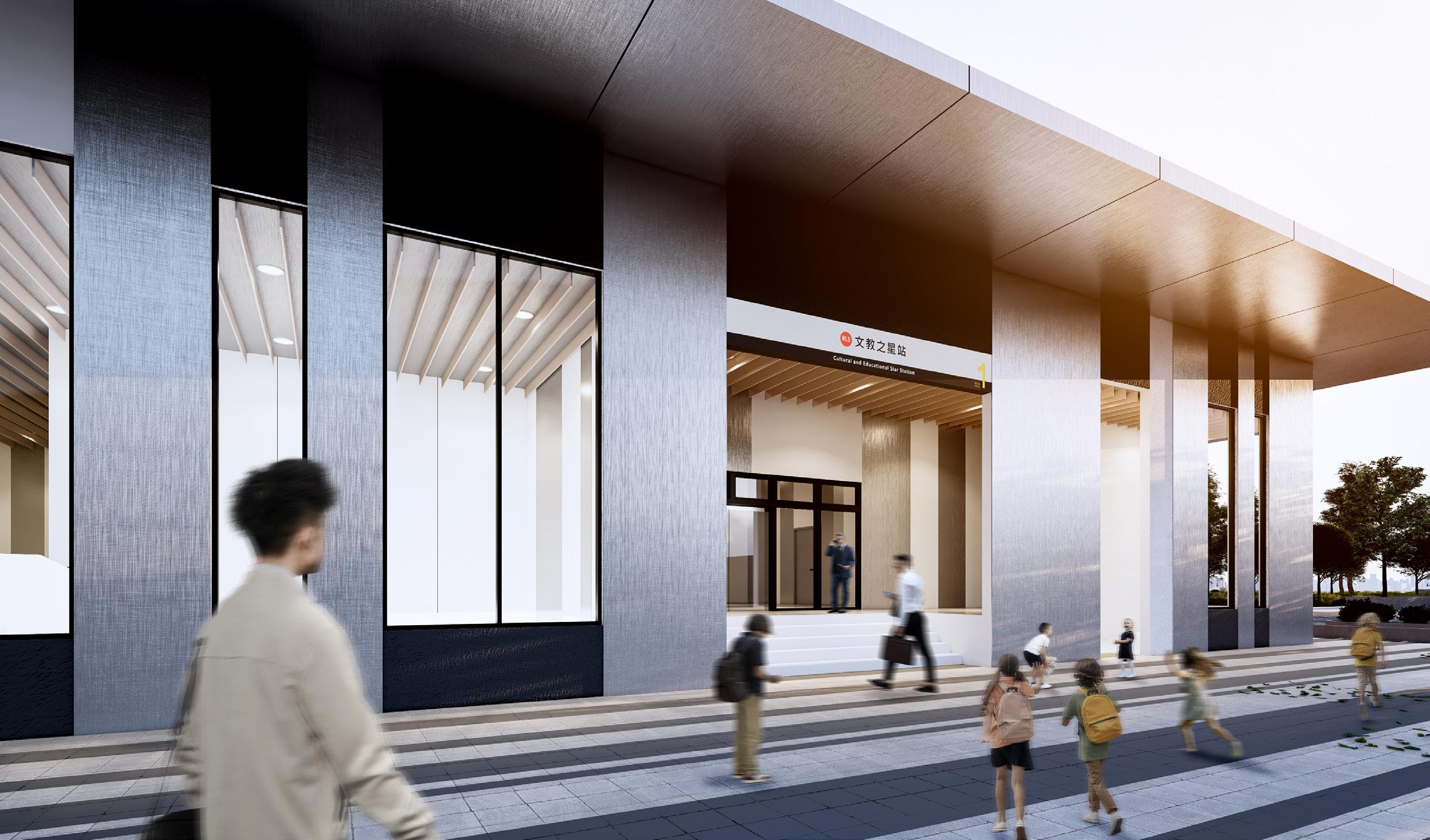


Tainan is considered the cultural capital of Taiwan and features numerous cultural properties, exceptional cuisine, and the finest collection of traditional temples and cultural activities. In fact, news media giant CNN named Tainan as one of the world’s best travel destinations for 2024.
As urban development and population growth continue to increase in and around the city, it has become critically important to provide more convenient and comfortable transportation services. Therefore, the Tainan City Government began implementing the “Tainan Advanced Transportation System Plan” in 2013 and has proposed a six-line mass rapid transit (MRT) system as its priority network.
To minimize environmental impacts on a densely built urban environment with narrow roads, a monorail system, with its smaller profile, was chosen as the best solution. The Tainan City Advanced Transportation System Phase 1 Blue Line is the main route, connecting core urban areas like the Yongkang, Rende and East districts and other priority networks, such as the Blue Line Extension, Green Line, and Red Line. The total length of the Blue Line will be 8.39 kilometers, with 10 stations and one depot.

Since Tainan is the first city in Taiwan to select a monorail for its MRT system, this project is an excellent opportunity for our Taiwan team to provide design and technical engineering services. Our scope of work includes site investigations, civil, architecture and mechanical and electrical (M&E) design, and more. Additionally, we are pleased to have the opportunity to collaborate with the international consulting firm EGIS Group on this project.

According to Stephanie Shaw, TYLin Sam Schwartz City Solutions Principal and West Coast General Manager, and Jim MacRae, PLA, LEED® AP Principal at Design Workshop, Inc., this year is poised to show significant growth for micromobility. Micromobility refers to a wide variety of small, lightweight vehicles driven by users at speeds that typically fall below 15 mph (25 km/h). Examples include bicycles, e-bikes, electric scooters, and electric skateboards.
In the January 9 issue of Planetizen, their article Leading Micromobility Trends for 2024: From Urban Streets to Regional Implementation breaks down the key trends shaping this rapidly evolving method for getting around in urban areas.
 Stephanie Shaw, TYLin Sam Schwartz City Solutions Principal and West Coast General Manager
Stephanie Shaw, TYLin Sam Schwartz City Solutions Principal and West Coast General Manager

In collaboration with the City of Phoenix, Arizona, and Maricopa Association of Governments, TYLin has been involved in the preliminary engineering phase of the 3rd Street Rio Salado Bicycle/Pedestrian Bridge since 2021. We were recently selected to continue the project into final design.
Rio Salado (the Salt River) currently presents a barrier in the Valley Path regional off-street bicycle and pedestrian network. While paved paths are present on the north and south banks of the river, there are no low-stress, high-comfort facilities that allow non-motorized users to cross the river for several miles.
The Rio Reimagined initiative focuses on three key objectives:
Connecting Communities (Equitable Access): South Phoenix has historically been disconnected to Downtown Phoenix, with Rio Salado presenting a barrier between underserved South Phoenix and opportunities available in downtown areas. Nonmotorized travel between the two communities is currently limited to high-speed and high-volume roads. Beyond creating a local connection of Phoenix neighborhoods, this project also represents a regional nonmotorized link resulting in over 13 miles of low-stress pathways along the Rio Salado.
Restoring & Revitalizing Healthy Rivers (Clean Energy/ Restoring Natural Resources): The City of Phoenix has made significant investments in restoring the Rio Salado Habitat Restoration area within this project area. These investments have transformed a former dump site to a lush riparian corridor that includes miles of paved and unpaved trails.
Developing Economic Sustainability (Local Workforce Development): The investment in active transportation is anticipated to provide significant returns in health and economic benefits and function as a catalyst for sustainable development.
A study explored the feasibility of constructing a safe and convenient connection to the paved paths on the north and south banks of the Rio Salado. During the preliminary engineering phase, we established a preferred alignment and impacts of a pedestrian bridge across the Rio Salado between Central Avenue and 7th Street.
Three alignments and five bridge types were evaluated. The 3rd Street alignment was selected based on input from stakeholder outreach, public surveys, a public meeting, and available information regarding opportunities and constraints within the project area. Community feedback was the driver in the development of a preliminary aesthetic concept. For the final design phase, TYLin will coordinate with multiple concurrent City contracts and consultants to further refine our bridge concepts and develop sustainable solutions.
The new bridge will provide a safer route for pedestrians and bicyclists while providing Americans with Disabilities Act (ADA) compliant access so that all users can cross the river. The bridge design will provide vantage points for enjoying the diverse and unique wildlife ecosystem along Rio Salado.


In a recent development, the RapidRide J Line Project is currently underway to implement bus rapid transit (BRT) along a 5.5-mile corridor, connecting downtown Seattle, Washington, to the University District. The Seattle Department of Transportation (SDOT) is leading the project in collaboration with King County Metro, which will ultimately own and manage the BRT facilities. TYLin serves as the subcontractor to HDR, with Jason Boyett , PE, overseeing the final design as the Design Manager. Jason will continue in this role in the design services during construction.
The primary goal of the RapidRide J Line Project is to enhance transit capacity, travel time, reliability, connectivity, comfort, and visibility along the corridor. Additionally, the project aims to make improvements for pedestrians and cyclists. By doing so, the project will significantly improve access and mobility in this rapidly expanding urban corridor, providing improved connections to key employment centers, residential areas, schools, and businesses. To achieve these goals, the project includes various transit priority treatments designed to enhance speed, reliability, capacity, and the overall passenger experience.
The project received a significant boost this past January when the Federal Transit Administration (FTA) approved USD 64.2 million in FTA Small Starts Grant Funding for the RapidRide J Line. This funding milestone signifies a major step forward for the project. Furthermore, on February 9, the project was officially opened to the public and is now open for advertisement. Construction is expected to start later this year, with construction completed and service launched in 2027.


Relief from traffic congestion has arrived in Corona, California, with the opening of the I-15/SR 91 Express Lanes Connector. TYLin designed the connector as the Prime Consultant for the Rados-Myers construction joint venture.
This innovative project by Riverside County Transportation Commission and the California Department of Transportation links the Interstate 15 Express Lanes to the State Route 91 Express Lanes. Project benefits include:
Smoother commutes for residents of Corona, Norco, Jurupa Valley, Eastvale, and more.
Reduced congestion and improved traffic flow.
Enhanced safety for everyone on the road.
A seamless transition between the I-15 and SR-91 Express Lanes for faster, more reliable travel.
TYLin attendees at the ribbon-cutting ceremony included Clark Fernon, PE, Karen Chapman, PE, Stephane Dulor, PE, DBIA, Albert Pan, PE, Alicia Lemke, Robert Barton, PE, Michael Brüning , PE, Rodrigo Gonzalez, and Austin De La Cruz . EIT.
Our design team for this landmark project included Pieter Goedhart , PE, SE, and Ashley Montgomery, PE, QSD, CMIT.


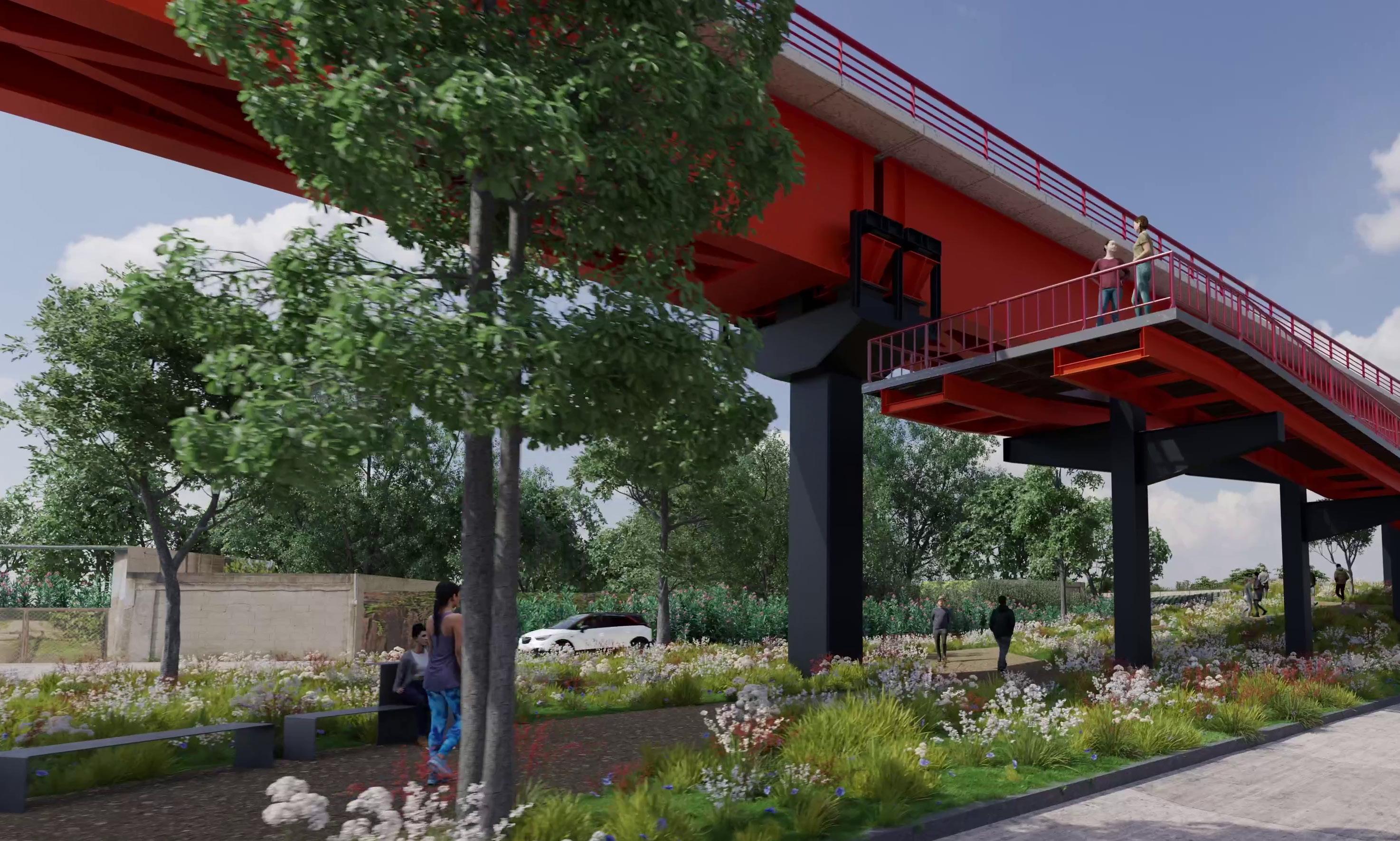
Among our ongoing projects in Mexico is the construction of the Huixtla urban viaduct in the town of Huixtla in the state of Chiapas. IDEAM, A TYLin Company (now doing business as TYLin) provided detailed design services for the new viaduct, which is part of the rehabilitation, replacement, modernization, and reconstruction of 526 structures and railways for the Lines K and KA Ixtepec, OAX. -CD. Hidalgo, Chiapas project.
The work for Line K is being performed by our offices in Madrid and Barcelona, Spain, and Mexico City (CDMEX), working together as an experienced multidisciplinary team of bridge and rail experts from our TYLin Europe / Latin America Region.
The overall project centers on the development of Mexico’s Isthmus of Tehuantepec, a narrow strip of land that represents the shortest distance between the Pacific Ocean to the south and the Gulf of Mexico
to the north. The immense project is currently under development and, in terms of structures, consists of 431 composite bridges, resulting in a total length of more than 14 kilometers. Of these bridges, 385 are single-span and 46 are special bridges consisting of several spans.
Among the special bridges, the Huixtla urban viaduct stands out. The twin steel girder connects to an upper concrete slab and has a total length of 3,100 meters. It comprises 84 simply supported spans, a main span of 42 meters, a width of 5.82 meters, and a height of 3.30 meters.
The Huixtla railway viaduct passes through the city of Huixtla, providing plenty of usable community space underneath to avoid dissecting the city into two parts. Additionally, TYLin provided a design that includes an attached pedestrian walkway when crossing the Huixtla River. To ensure an


optimal construction schedule and quality of work, our design also emphasizes a high degree of prefabrication, including for both the steel beams and precast deck slabs, as well as the steel columns. The bridge will be completed by September 2024.
RECAL, who has the contract for the rehabilitation of Line K, selected our team to carry out the project for the entire railway line, under the management and supervision of Mexico’s Secretaría de Marina (SEMAR). The Line K project measures close to 500 kilometers and includes the replacement of railway bridges.
In conjunction with work on Lines Z and FA, Line K is opening the southeast region of the country to freight rail transport service where there is the greatest opportunity for increased growth and prosperity.
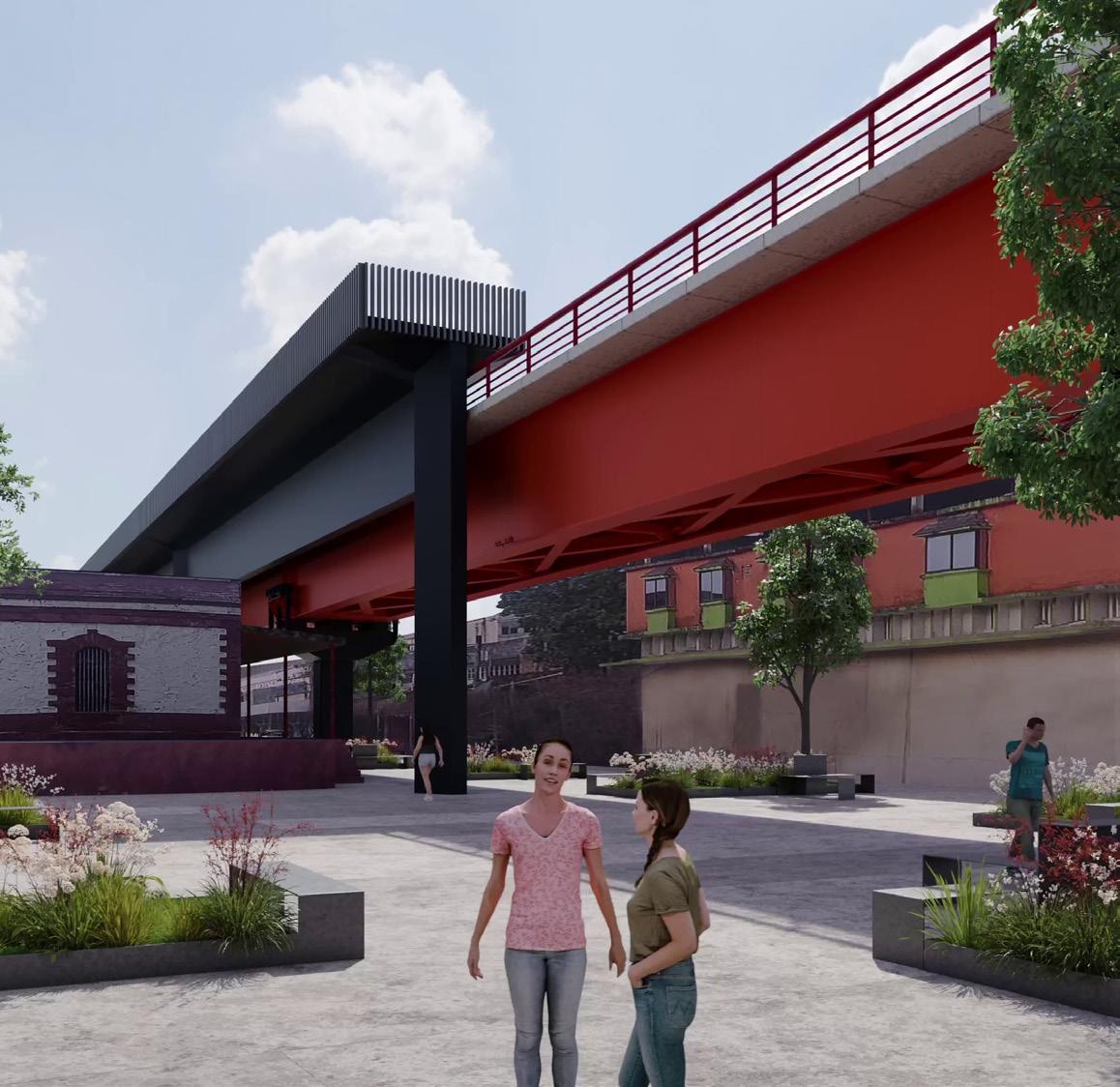

At the end of December 2023, Mexico’s Line Z was put into service after the completion of four of the six steel and concrete composite railway bridges designed by IDEAM, A TYLin Company (now doing business as TYLin). The new bridges are located between the towns of Ubero and Mogoñé in the state of Oaxaca.
Three of the structures, the Mogoñé, Malvinas, and Palomares bridges, have a single span of 36 meters, with a simply supported steel deck with a “U” section due to the lower clearance limitations. The Ubero Bridge has been designed as a structure with a single span of 24 meters. The simply supported deck includes a section with two steel girders connected to the upper slab, forming a composite section. The abutments have deep foundations with piles and are connected to the deck by the concrete slab. The connection was designed so that the bridge is monolithically linked to the abutments against horizontal forces, avoiding the use of joint or track expansion devices.

RECAL, who is overseeing the execution and replacement of seven of the 16 existing railway bridges of Section 2, has entrusted TYLin to carry out the replacement of all seven bridges, under the management and supervision of the Secretaría de Marina (SEMAR). The work is being performed by our offices in Madrid and Barcelona, Spain, and Mexico City (CDMEX), working together as an experienced multidisciplinary team from our TYLin Europe / Latin America Region.
The 212-kilometer-long Line Z connects the states of Veracruz and Oaxaca and is integrated into the Mexican railway network of the Isthmus of Tehuantepec. This project seeks to establish the Z line, in conjunction with Lines K and FA, as a rail freight transportation service that interconnects the main cities and railway ports in the southeastern region of the country. The goal is to connect four of the states with the greatest potential to promote Mexico’s socioeconomic development.
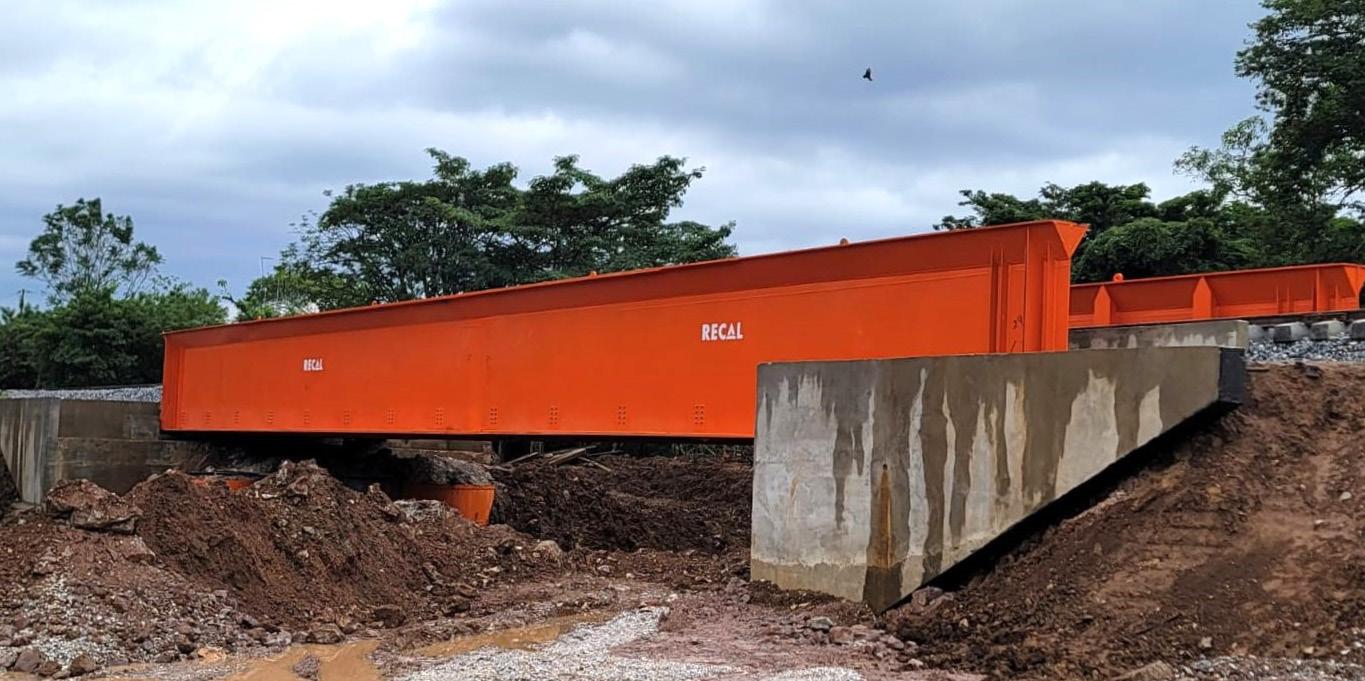
The assembly of the piers and precast beams for Viaducts V2 and V3 has begun for the Suburban Train system that will connect Lechería Station and Felipe Ángeles International Airport (Mexico City-AIFA) in Mexico City, Mexico. Viaducts V2 and V3 have similar typology and length and feature 14 simply supported spans, with typical spans of 32 meters and a total length of 443.8 meters each.
The deck is formed by a 9.90-meter-wide reinforced concrete slab over two precast “U”-shape prestressed concrete beams. For the typical span of 32 meters, the width is 3.5 meters at the top and the height is 2.20 meters.
The piers and pier caps are also reinforced concrete precast elements, with an octagonal hollow section of 2.40x3.90 meters, wall thickness of 0.45 meters, and heights that range between 3.9 meters and 8.4 meters. The piles for the deep foundations of the piers are being executed onsite.
IDEAM, A TYLin Company (now doing business as TYLin) provided the detailed design of the two viaducts for OHLA and is currently providing technical assistance to the construction contractor in the precasting plant and onsite. PACADAR is the precast workshop executing the concrete girders, piers, and pier caps for the two viaducts.
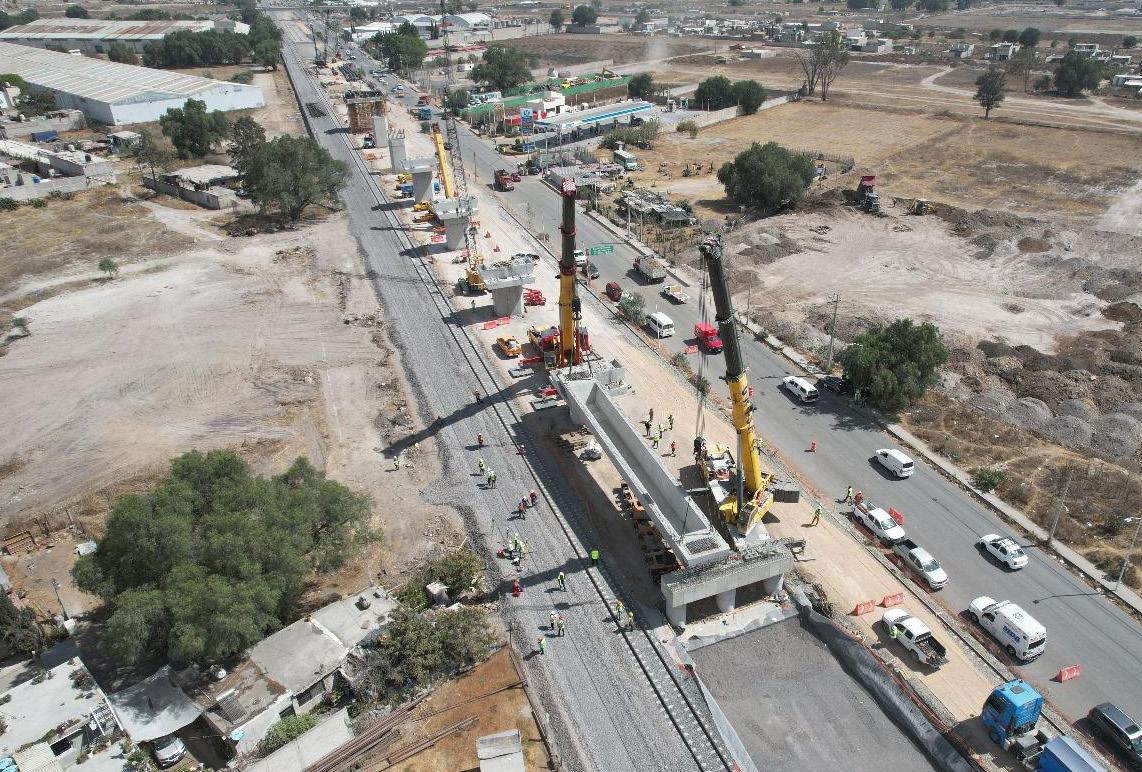


TYLin continues its close ties with the engineering program at the University of Maine (UMaine) by providing valuable career advice to students. Shawn Davis , PE, from TYLin’s Roads + Highways Sector, with assistance from Ben Toothaker, PE, from the Bridge Sector, and UMaine student Dallas Flood, presented to students and professors in Orono, Maine, on February 14 as part of the student chapter of the American Society of Civil Engineers.
“Engineering Beyond the Textbook, A Roadmap to Navigating Real World Design Issues” offered honest and practical insights into the realities of a career in engineering, encouraging students to think critically and develop essential skills beyond traditional academics.
Featuring an engaging and candid delivery, Shawn emphasized the importance of:
Understanding the “why” behind the “how:” Engineers should grasp the project’s purpose and objectives before diving into technical details.
Balancing theory with practicality : Considering real-world constraints, designs must be feasible and constructible.
Data-driven decision-making : Analyzing data helps assess risks and make informed choices.
Striving for excellence, not perfection: Recognizing limitations and uncertainties is crucial.
Accepting criticism while defending your work with confidence: Maintaining justified belief in your solutions and respectfully advocating for them while being open to others’ perspectives.
Shawn coached students on the importance of collaboration and creating cohesive design teams. He stressed that communication is critical, especially with clients, advising students to give clients the information they want and need without trying to impress them with calculations and models. The
presentation also touched on the realities of the public process associated with engineering projects, the need to distinguish oneself among many qualified engineers, and the importance of establishing relationships before winning the project.
This event was an opportunity to connect with potential interns and seasonal employees while maintaining TYLin’s commitment to supporting UMaine’s engineering program and preparing future generations of engineers for successful careers.



On March 5, TYLin’s Carol Choi, PE, CMQ/OE, PMP, Principal Project Manager, and Hardik Patel, PE, SE, Principal Bridge Engineer, presented on the Samuel De Champlain Bridge Corridor Project to engineering students from California’s San Jose State University (SJSU) and industry guests. The event was the annual Student Night hosted by the American Concrete Institute (ACI). The presentation focused on the maximized use of precast concrete elements to achieve accelerated bridge construction.
The Samuel De Champlain Bridge Corridor Project in Montreal, Quebec, Canada, was designed and built on a fast-tracked schedule while mitigating a suite of site-specific challenges. TYLin serves multiple roles on the project, led by Bridge Sector Leader and Chief Bridge Engineer, Marwan Nader, PhD, PE, P.Eng, Eng. TYLin is the Managing Partner of the bridge design joint venture, the Design Quality Manager, as well as the Engineer of Record for the signature cable-stayed bridge.
“It was such a pleasure for TYLin to present to a group of more than 70 inspired students, who represent our next generation of engineers,” says Carol, who serves as the Design Quality Manager for project.
Students interested in inquiring about summer internships and permanent positions at TYLin can visit Students & Graduates | TYLin Group to see our current openings.
Todd Wilkinson, PE, a Senior Airport Engineer at TYLin, recently gave a talk on aviation engineering to students at California Polytechnic State University, San Luis Obispo (Cal Poly SLO) in California. The Cal Poly American Society of Civil Engineers hosted the event. Says Todd, “It was great to share my experiences with the next generation of great civil engineers!”




MULTIPLE STATES, USA
TYLin Blueprint is the company’s highly successful adopt-a-school program and designed to inspire and cultivate the next generation of Science, Technology, Engineering, and Mathematics (STEM) leaders. Launched in Chicago, Illinois, and New York, New York, the program also operates in San Diego, California, and will soon expand to Bellevue, Washington.
In Chicago, TYLin delivers “lunch and learn” sessions at Gwendolyn Brooks College Preparatory Academy that regularly attract 30 or more students. The program includes a two-week initiative where bridge engineers provide hands-on experiences in the classroom. During their junior and senior years, students can apply for a sixweek internship in our Chicago office to be immersed in each of the firm’s infrastructure sectors. Learn more.

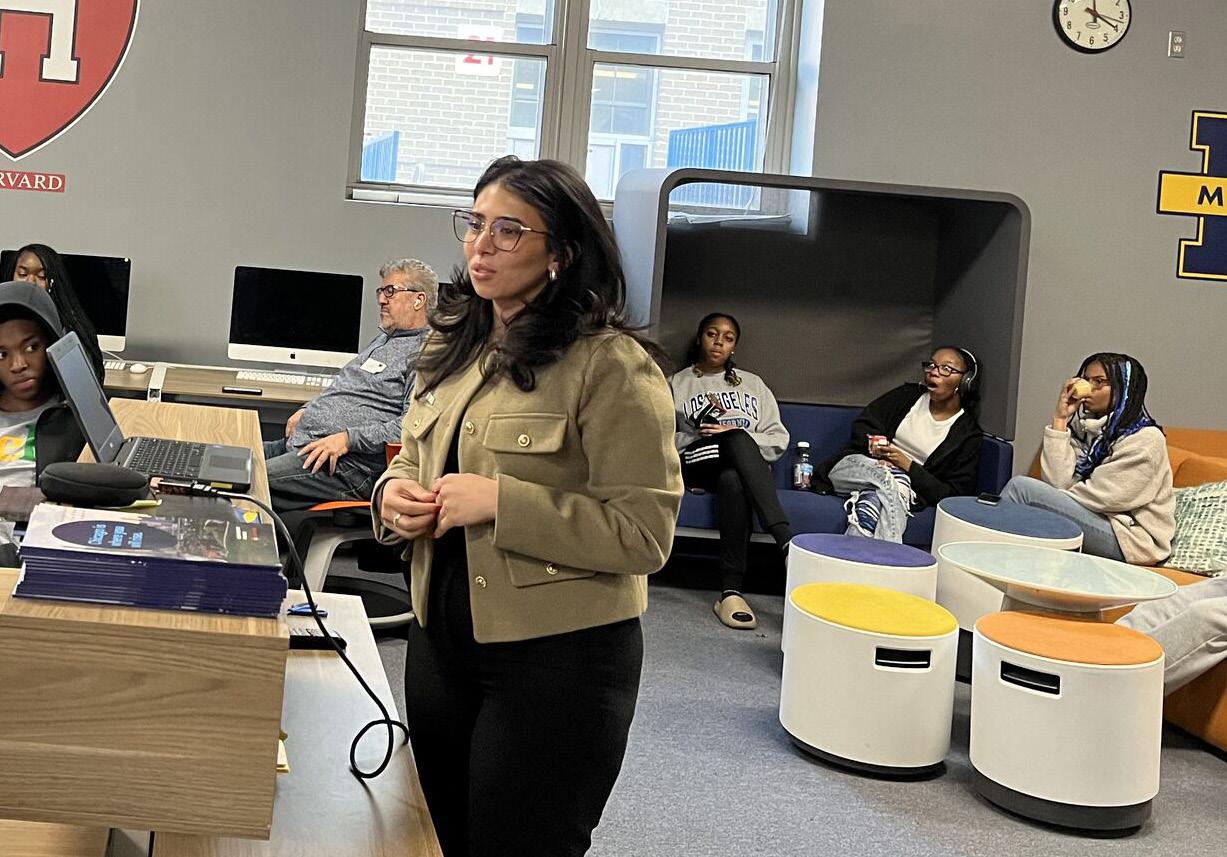

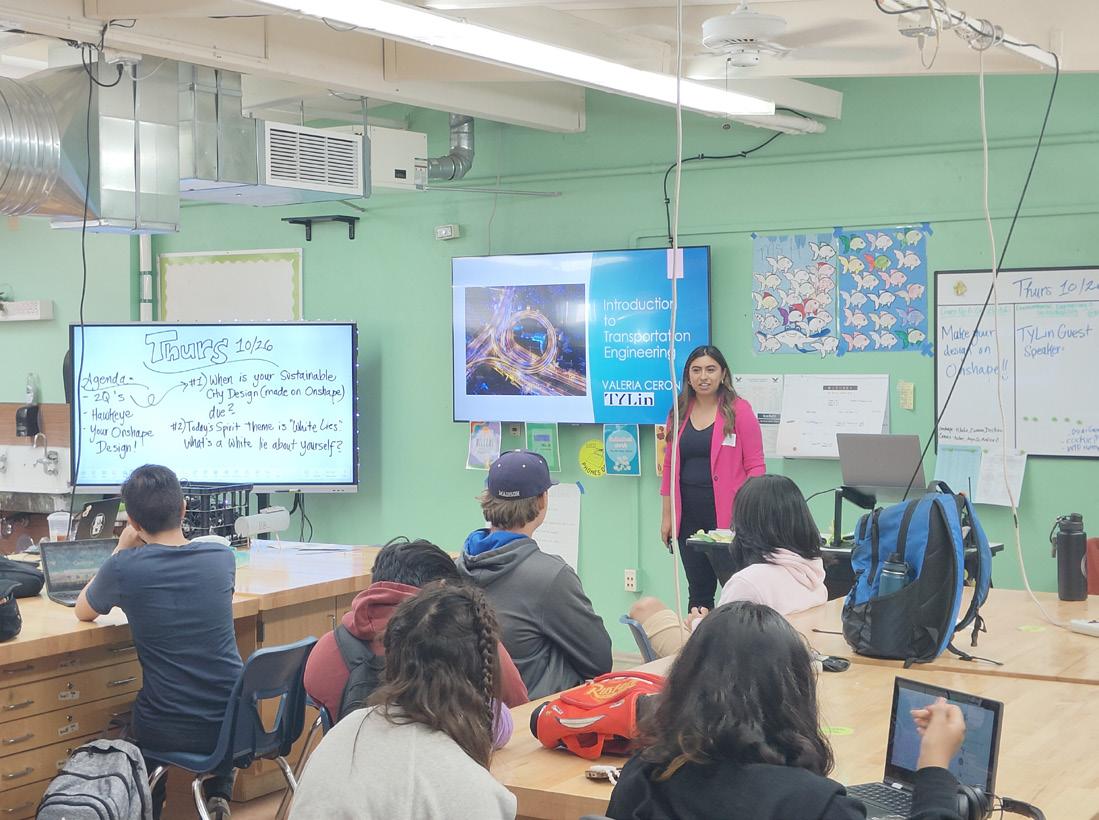

We always look forward to National Engineers Week (EWeek)! This year, Adeshola Adewale, an Engineer with TYLin Sam Schwartz City Solutions and an In-House Transportation Consultant at the Chicago Department of Transportation, joined the Chicago Professionals chapter of the National Society of Black Engineers (NBSE) to lead an exciting activity that engaged high school students with the fundamentals of traffic engineering.

TYLin’s Taiwan team held its year-end party on January 31, before the eve of Lunar New Year. In Asia, it is traditional for people to gather at the end of each year to attend the year-end banquets hosted by various companies in Singapore, Taiwan, Malaysia, and China. While they may appear to be social events, these year-end parties highlight the spirit of unity in Chinese culture. TYLin is like a big family in our Asia Pacific Region, where we treat each other like relatives and siblings, as demonstrated by our cohesiveness and commitment to partnership.
This year’s event also allowed us to acknowledge our 2023 Global Infrastructure Elevation Award winners, who participated in a major competition organized by TYLin Group and its global affiliates. The Taiwan office stood out among more than 87 company locations worldwide, receiving recognition in four out of six categories. Matt Cummings , TYLin Chief Executive Officer, flew in over 10,000 miles from the United States to personally present the awards at the yearend party.


At TYLin, we are committed to “Connecting people, places, and ideas.” Interoffice collaboration is not just a development strategy for a global engineering group; nor is it just a simple noun. It is an intrinsic value that our TYLin family has held and adhered to for decades – and we honor the genuine friendships we have built through collaboration.
William (Will) Farrell, a Senior Transportation Engineer with TYLin Sam Schwartz City Solutions in New York, NY, was named an Urban Design Forum Rewire Fellow. As a member of the Rewire Program’s Resilient Commutes working group, Will and his colleagues will explore how to decarbonize and enhance New York City’s transportation systems.
With more than 10 years of experience in New York City, Will has a strong conviction for social, economic, and environmental justice. His previous positions include his work as a data journalist for the DC Policy Center and an adjunct professor at The City College of New York.



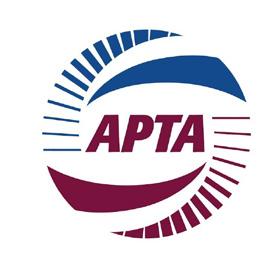
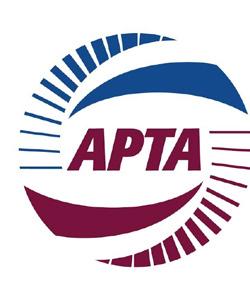
2024 ACEC Annual Convention and Legislative Summit
May 13-16 | Washington, DC
96th Annual AAAE Conference & Exposition
April 28 - May 1 | Nashville, Tennessee
2024 APTA Mobility Conference
April 28 - May 1 | Portland, Oregon
2024 APTA Rail Conference
June 2-5 | Cleveland, Ohio

 Front and back covers: Boca del Cerro Bridge in Mexico.
Front and back covers: Boca del Cerro Bridge in Mexico.